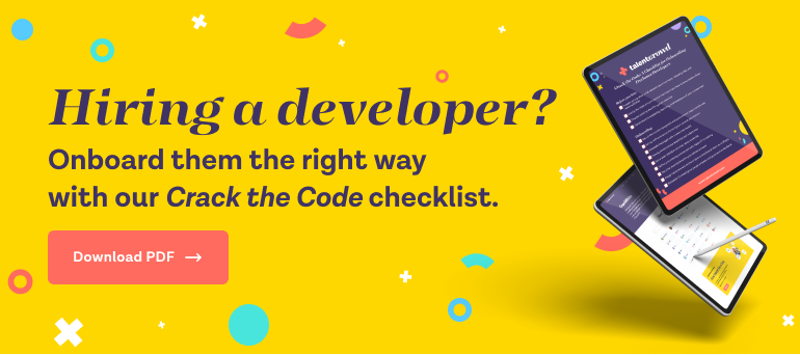There are currently 70.4 million freelance workers in the US. That number is projected to jump to a whopping 90.1 million in another five years.
If you, like millions of other Americans, are looking for the independence and freedom that comes with being your own boss but are wondering how exactly to make money freelancing, read on!
This article will discuss the basics of freelancing, the benefits of a freelance career, and eight practical tips to make money.
What is freelancing?
Freelancing means working as an independent contractor and loaning your skills to various employers. As a freelancer, you are self-employed, typically hired on a short-term basis, and paid per project or task.
Popular freelance jobs include:
- web developer
- web designer
- software developer
- freelance writer
- freelance editor
- graphic designer
- social media specialist
- teaching assistant
- consultant
Benefits of Becoming a Freelancer
Why do so many people want to become a freelancer anyway? The "why" comes down to one word: freedom. Individuals who start freelancing do so because they want the power to choose their schedule, pricing, clients, projects, and work environment. The combination of these factors means that people who choose freelance work are far more likely to attain a healthy work-life balance.
Schedule
Whether you want a full-time job with a traditional Monday through Friday work schedule, or are looking to work only a few hours per week, a freelancing career has you covered. Control over their schedule is a huge factor in job satisfaction for those trying to find a better work-life balance. With the freedom to choose when they're on the clock, freelance workers can arrange their lives according to personal priorities and schedules.
Pricing
The biggest reason you can make money freelancing is the fact that you have the power to set your pricing. While traditional jobs pay you what they think your time and skills are worth, you can set your pricing to what you know you're worth with freelance jobs.
For a lot of people, freelance work makes good business sense. Research shows the majority of freelancers make more money than they would with regular employment.
Clients
Choosing a freelance career comes with the responsibility of finding your clients. As challenging as this may feel, selecting ideal clients significantly affects your income and the types of projects, you'll work on. Freelancing allows you to work with all kinds of people and even multiple clients simultaneously.
Projects
Freelance projects can range from months-long endeavors to fast fixes with quick turnarounds. The kind of project you choose is up to you! Working as a freelancer means you have the freedom to choose assignments that are meaningful and interesting. Sure, not every project will be earth-shatteringly innovative, but that's the beauty of freelance work. Since freelancers typically are hired per project, you can afford to decline specific assignments and focus your efforts elsewhere.
Work environment
Not a big fan of in-office work life? While freelance projects can be completed in person, most are remote work. The beauty of a freelance job is as long as you have a reliable internet connection, you can work from anywhere.
Work-life balance
The desire to achieve a healthier work-life balance is the driving force behind the average person's decision to leave the traditional workspace and become an independent contractor. And it's working! Research shows that freelance workers are more satisfied and fulfilled than conventional workers.
Tips to Make Making Money Freelancing
We can all agree that freelancing offers some fantastic perks. And while it certainly sounds like a dream, many freelancers find it tricky to earn enough to justify all the work they're putting in as a one-person show. Below is a list of eight tips to help you establish the most profitable freelance job possible.
1. Find your niche
The first step to making money in the freelance world is choosing your area of focus. One way to narrow your options is to consider catering to a niche market. Consider not only what you can do now but what areas of the industry you'd like to break into. Your current skills and future goals will help guide your efforts as you learn what clients and projects you most enjoy.
For some individuals, choosing a specialty takes no time at all. But for most, finding a niche takes time. Trial and error will help you narrow your focus and see what you can offer that others can't. Narrowing your focus will set you up as a specialist within your niche-- making you more likely to be sought out by employers needing your specific expertise.
2. Price yourself correctly
Traditionally, freelancers get paid in three ways: hourly, per-project, and retainment agreements.
Hourly rates are a straightforward way to price your services, and most freelancers start this way. A freelance developer earns between $61-$80 per hour on average in the tech industry. Pay rates can be higher or lower depending on experience and expertise. Even if you are still determining how to price your services when starting, the good news is that you can always increase your rates later in your career.
While commonly used, getting paid by the hour can become problematic. Freelancers who work quickly may find the quality of their work isn't reflected in their paycheck. Wages don't accurately represent the end product. Nobody wants to find themselves getting paid less just because they're efficient.
Generally speaking, if you want to make more money as a freelancer, per-project pay or a retainer agreement may be the way to go. Many clients don't care how many hours you spend on a project as long as the result meets the requirements. Companies are willing to pay for quality work.
Another strategy for pricing is to ask the interested client what their budget is--then, you'll have a range to negotiate.
3. Develop an online portfolio
A simple way to create an online showing of your work and resume is to combine both into a personalized portfolio site. Creating a customized website is a great way to showcase who you are and what you can do. It's an impactful and engaging way for potential clients to look into what you have to offer.
When creating your portfolio site, consider including the following pages: About, My Work, Pricing, Testimonials, and Contact.
About
Your About page should be a mini biography that gives prospective clients the highlights of who you are and what you do. It should be engaging enough that if a client looked at just one page, they'd want to contact you. An About page is a place to showcase your personality, present your backstory and motivations, and list your education and experience.
When crafting the perfect About page, include only relevant information. You may have worked as a professional dog groomer, but that doesn't mean much now that you are freelancing in software development. Include only the skills and experience for which you want to be hired.
Lastly, include a current photo of you on your About page. Pictures add a personal touch and help clients view you as trustworthy and approachable.
My Work
This is the page that details what you've accomplished. While it can be tempting to provide examples of every project you've ever worked on, it's important to remember that less is sometimes more. Showcasing your best work is a no-brainer, but be sure to focus on projects similar to the type of work you hope to see in the future. Other experiences to highlight are any work done for high-profile or well-known clients. Even if the project you worked on wasn't your favorite, it could be beneficial to name-drop successful brands.
Pricing
This is where you can break down what you offer and how much you charge. Tiered pricing is a great way to give the client options while maintaining upfront, transparent rates. Many sites also include a section that instructs a new client to contact the freelancer for a quote or to discuss the pricing of a specific assignment.
Testimonials
Word-of-mouth referrals and written testimonials are powerful tools when finding clients. This is a situation in which you want people to talk about you! Using your own clients' reviews of your work can turn potential clients into paying clients.
Contact
It's a good idea to offer multiple ways to get a hold of you. Many freelancers include their phone numbers, email, LinkedIn URL, and other relevant social media handles. Above all, make sure your contact information is clear and easy to find. A timely response also plays a significant role in attaining a prospective client.
4. Find quality clients
The ideal client will look different to everyone. Do you enjoy the close-knit teams associated with small business owners, or do you have your sights set on a retainer deal with a big tech group? This is the time to do your research on brands you love and think back on past experiences. Ask yourself what type of people you like to work with and search for companies that align with your beliefs and life goals.
Once you know what a good client looks like to you, it's time to find job listings. You can take many routes to connect with potential clients, and putting multiple feelers into the job market is a good idea. Social media is a simple way to promote your freelance brand. Enlisting the help of crowdsourcing services like Talentcrowd will help you find the best and most timely job listings.
5. Ask for referrals
Testimonials don't have to be lengthy. A paragraph (or less) added to your portfolio is enough to let visitors to your site know that the client thinks highly of your work. The best time to ask freelance clients for a referral is after you've completed a project that they are happy with. Satisfied clients will be glad to write a quick blurb explaining why they recommend your services.
A good reputation makes converting potential clients into new clients simple. Your reputation and online presence will grow as you build a strong portfolio and network with other freelancers and clients.
6. Continue to learn
It's a well-known fact that to stay on top in the tech realm, you need to sharpen your skills continuously. This is especially true in the freelance world, where a dependable salary is not constant. Freelancers can't afford to become stagnant.
Online courses are a fantastic way to expand your understanding and keep up to date on the latest trends and technology. If you're more of a hands-on learner, industry conferences are a great way to connect and learn with people from all around the globe.
Not only will continuing your education help maintain the skills you have currently, but it will also give you a chance to develop new skills and gain a competitive edge.
7. Develop an online product for passive income
Many people considering a career change start freelancing as a side gig. A smart way to boost revenue while still actively building your brand is to develop an online product that will bring in passive income.
Ideas for passive income include monetizing your personal blog, offering online courses, or creating a digital product to sell. Diversifying your revenue with online products makes excellent business and financial sense.
8. Don't quit your day job--Yet.
While the potential to make money freelancing is excellent, the road to success isn't always a straight shot. Those with a steady income can afford to be picky about their freelance projects. When you aren't worried about making enough money to pay the bills, you can afford to take the jobs that genuinely interest you--thus furthering the goal of zoning in on a specific niche. This will add weight to your portfolio to promote your freelance focus.
It may take time, but with all the advantages freelancing offers, it's worth the effort. Setting yourself up for success in a profitable freelance job takes time and a lot of work, but with these tips, you're well on your way to becoming your own boss.
Key Takeaways
A freelance career offers the freedom to cater work parameters to your liking and establish a healthy work-life balance.
Tips to make more money as a freelancer include:
- Finding your niche market
- Pricing yourself correctly
- Developing an online portfolio
- Searching for quality clients
- Asking for referrals
- Continuous learning
- Offering an online product
- Using your current job as a safety net until your freelance business takes off
Ready to get started? Search for ideal clients and start your freelancing journey today with Talentcrowd.




